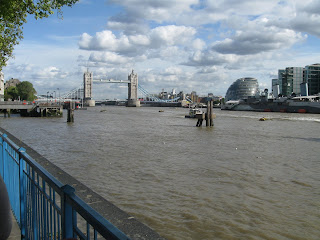
This square would have been the life blood of Preston back in 1838 when Heber C. Kimball, Joseph Fielding, and Willard Richards would have arrived. Preston was Gordon B. Hinckley’s first mission area as well, and market square is where he preached for the first time, and was absolutely terrified to do it. As I stood in that place I was in awe. It wasn’t particularly beautiful, we were actually in the middle of a street fair type of thing and there were lots of people around, it was noisy, dirty, and just a normal town. What struck me was the significance of this place to the restoration of the gospel. My ancestors all come from England and Wales, so in that way I am directly affected by the missionary work that originated there. In the days leading up to this trip I have been praying that I could feel the spirit in these places and really appreciate what I would be seeing. I feel blessed to have felt the spirit of that place.
Anyways, it started to rain so we all went into this museum where they had an exhibit that showed what Preston was like back in the 1800s. Honestly, it was super nasty and I am so glad that most places aren’t like that anymore. Up to the 1900s Preston was a major place for the cotton industry. The damp climate and the easy accessibility to the canals made it an ideal location for production and export of cotton. Unfortunately all of the mills created horrible living conditions for the poor people. The medieval layout of the town was altered once the Industrial Revolution came around and the planning was just really bad. All of the houses were crowded together, the sanitation was awful, and those factors combined with the working conditions in the mills resulted in a high mortality rate. In 1837, 50% of children under the age of 5 would die, and the average age of death was 18 years old. The gap between rich and poor was huge and there was a lot of strife and striking in Preston. It just wasn’t a very happy place to be.
Still, the missionaries had great success there and I think it is obvious that much of that success is due to the bad living conditions and difficult lives led by the working class. Those people were ready for the gospel; they really needed that light and hope in their lives. I can only imagine the joy they must have felt when they learned of the Plan of Salvation, eternal families, and the comfort that the Holy Ghost brings—especially in light of the path their lives were probably on.
The adversary was aware of what was taking place, and on Wilfred Street we saw the spot where Heber C. Kimball was stricken by evil spirits and witnessed the “battle between good and evil for the souls in the British Isles.” I didn’t really like being there. To this day that house is still referred to as being haunted, and some people call it the “House of Devil.” This whole thing just proves what a big thing was about to happen. I imagine that Satan wasn’t about to go down without a fight, and the missionaries definitely had their fair share of adversity, but truth always prevails!


We continued walking through the town and Peter pointed out a lot of interesting little features and spots of historical significance, and told us lots of stories about people involved in the early days of the church in Preston. One of my favorite things was seeing the Ribble River where 9,000 people gathered to see the first 10 baptisms.

My feelings of this day are summed up in this entry I made in my journal the night after seeing Preston. “It is so incredible to be in the places that are so significant to the church. I keep thinking, ‘Wow, Heber C. Kimball actually stood in this spot and saw that building!’ Learning all of this history has really helped me to gain a deeper appreciation for the early saints and the missionaries. The trials and tribulations they endured were so beyond anything I can imagine—but at the same time, so are the spiritual blessing and experiences they received.” We ended the day at the temple in Chorley, which I thought was highly appropriate. The temple grounds were beautiful and peaceful, it is truly the House of the Lord!






























